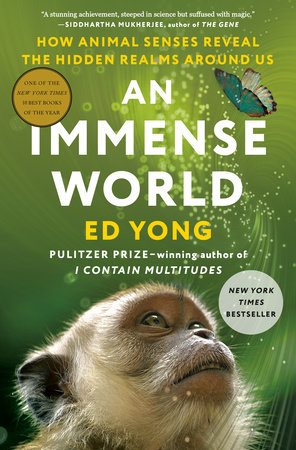
Dolphins use echolocation to “see” the world around them. Using only sound, they can create pictures of objects that they are then able to recognize when they see those same objects visually. But this way of seeing doesn’t just stop at the skin. When a dolphin “sees” someone swimming in the water using echolocation, they can also see inside of them, envisioning their bones, organs, and even whether they’re pregnant. While this may seem remarkable, it is just the beginning of the stunning ways that non-human animals perceive the world. In his book, An Immense World (Random House, 2022), Ed Yong dives headfirst into the unique sensory bubbles of countless creatures, opening our eyes not just to the ways that animals perceive the world, but how much of it we frequently miss out on.
Understanding the perceptual realities of animals can help us to be better stewards of our world. Along with the more obvious ways that we threaten and destroy ecosystems, we can also disrupt the animal kingdom by flooding the world with light and sound. When they hatch under the moonlight, baby turtles instinctively crawl away from the shadows and towards the light. This typically takes them to the ocean, but with overwhelming amounts of light pollution, many hatchlings now crawl away from the water and to their deaths. In the open ocean, the sound of cargo ships puts many creatures on the defensive, causing crabs to stop hunting and humpback whales to halt their calls. Protecting these animals requires not just conserving their natural habitats, but also not disrupting the stimuli that are found there, even when those stimuli are beyond the reach of human perception.



